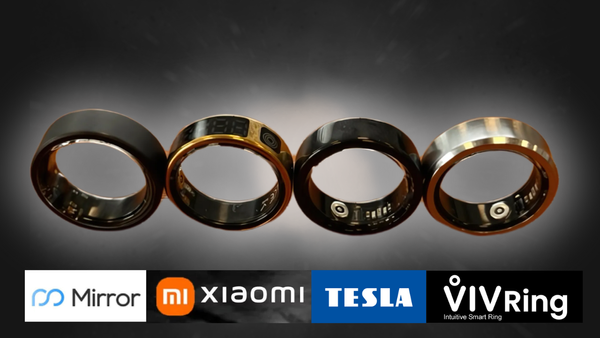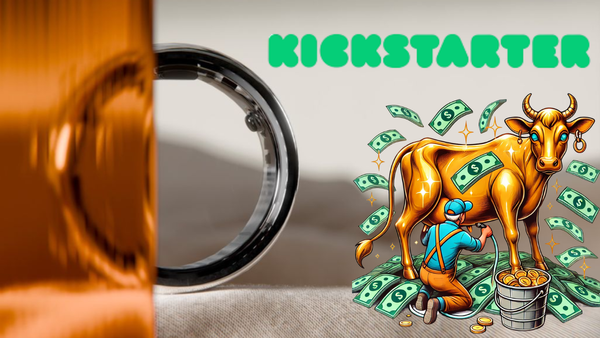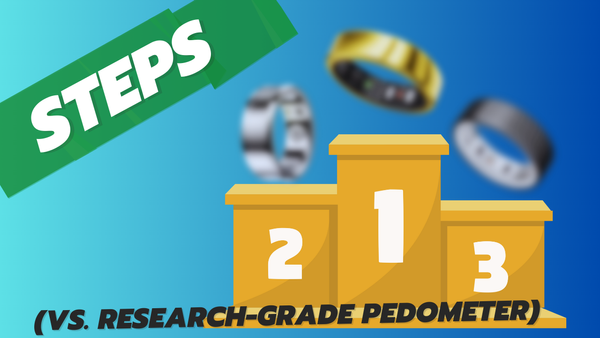Oura Ring Q1 2023 updates- chronotype and body clock
While I’m expecting rather significant updates from Circular and RingConn in the smart ring plane, Oura Health has come out quite quietly…

While I’m expecting rather significant updates from Circular and RingConn in the smart ring plane, Oura Health has come out quite quietly with some news that follows the market trend to some extent.
Let’s break it down.
Determining the chronotype
Oura can currently determine what your sleep profile AKA — what chronotype you are. In other words, whether you are an early bird or the proverbial evening owl. Ironically, Oura is not the first in the ring category, as Circular Ring already has this functionality. And further in the wearables field, we can find a similar issue with, for example, the Fitbit device, which goes even further in the animal metaphor of the bird and the owl.

Oura currently distinguishes 6 types of chronotype:
- Early morning type — Early morning bird
- Morning type — Early bird
- Late morning type — Late morning bird
- Early evening type — Early evening owl
- Evening type — Evening owl
- Late evening type — Late evening owl.
This is basically passive information that is calculated based on the last 30 measured sleeps longer than 3h. The following data enter the chronotype algorithm:
- Temperature,
- activity,
- sleep.
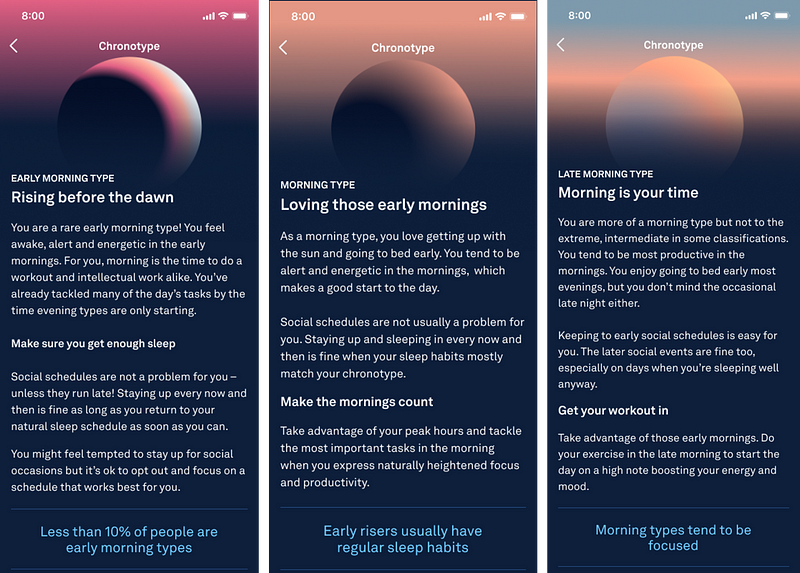
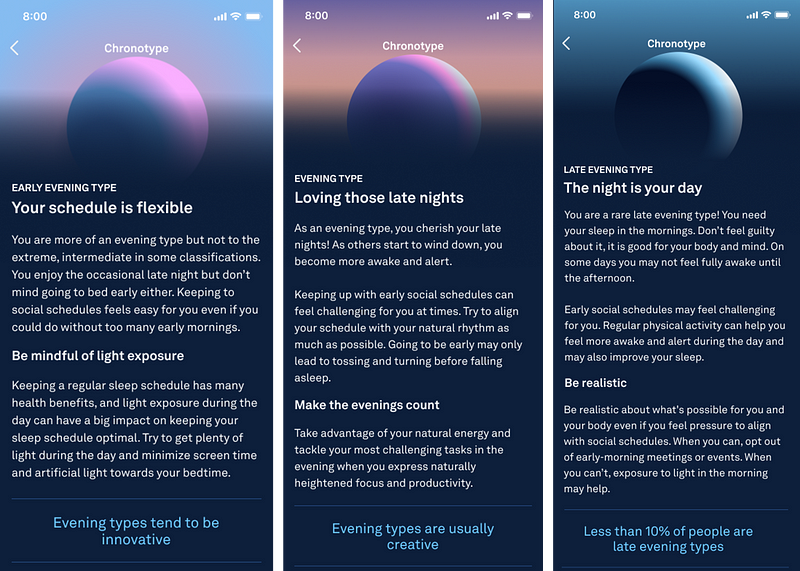
As you can see from the gallery above, each chronotype is accompanied by basic information and recommendations. Also included is a circular representation of the optimal sleep schedule for that chronotype, see below for an example for mine — the (standard) early bird.
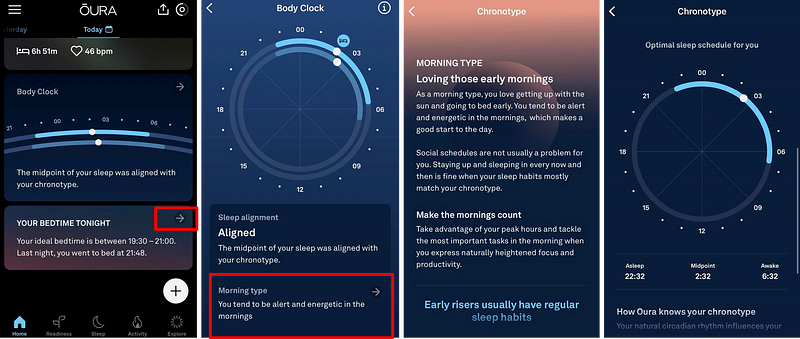
We can debate here whether a biological chronotype exists at all, the scientific community is not in agreement, however, e.g. Prof Mathew Walker (author of Why We Sleep) gives an evolutionary reason for the existence of biologically determined chronotypes. This is to minimize the time when most members of the pack are asleep , i.e. to reduce the risk time of potential threat from the enemy. I believe that a biological basis for a chronotype can exist, but it can be quite influenced by behavior and external conditions.
Personally, I think my chronotype fits, although I got used to it a bit more violently after the birth of my children. They are currently getting up quite early, and I figure it will be advantageous for me not to contribute to the waking experience by getting to bed late. This is loosely related to another new development, the Sleep Regularity contributor.
Sleep regularity
This is a new contributor (i.e. a parameter that enters the calculation) of the Readiness metric. It includes a verbal rating (Optimal, Good, , Fair, Pay attention) for the consistency of the sleep schedule over the last 14 days.
It complements and thus actually represents the actual recommendation of the ideal “when to go to bed” (ideal bedtime).
Sleep consistency is one of the key general recommendations for quality sleep, so incorporating it into the Readiness recommendations definitely makes sense 👌.
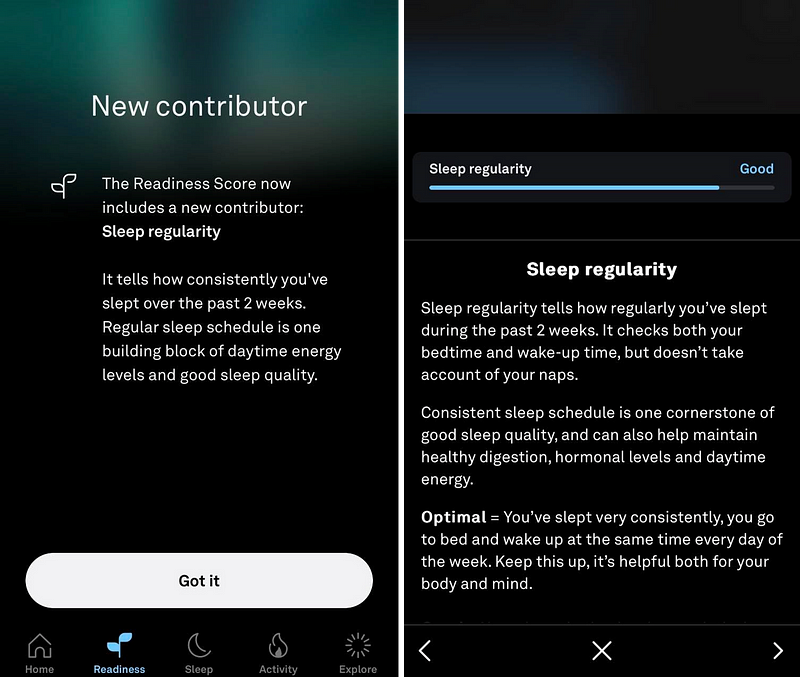
Body Clock
The third update is the “body clock” which de facto combines in visual form the timing of the previous night in accordance with the mentioned chronotype.
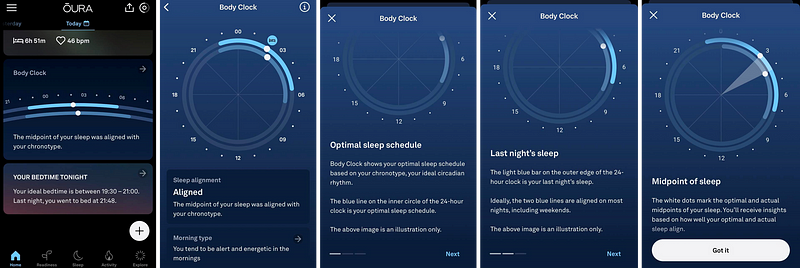
The above updates are relevant for both GEN2 and GEN3 (with active subscription), I currently have app version 4.10.1 where the novelties are deployed.
Beta sleep phase still beta
Due to the automation of sleep data downloads, I have asked support when the beta version of the sleep algorithm is scheduled to roll over to the production version. Oury customer service is mysterious in these cases. I have not learned anything.
However, based on both my personal tests and Quantified Scientist’s tests, the new version is profiled as more accurate (in both cases the measurements are compared to the Dreem2 EEG reference device).
Specifically, the Oura comes close in aggregate phase determination to the Apple Watch (which never ceases to fascinate me) and Fitbit devices. It is particularly weaker (but this tends to be the rule) in determining REM phase:
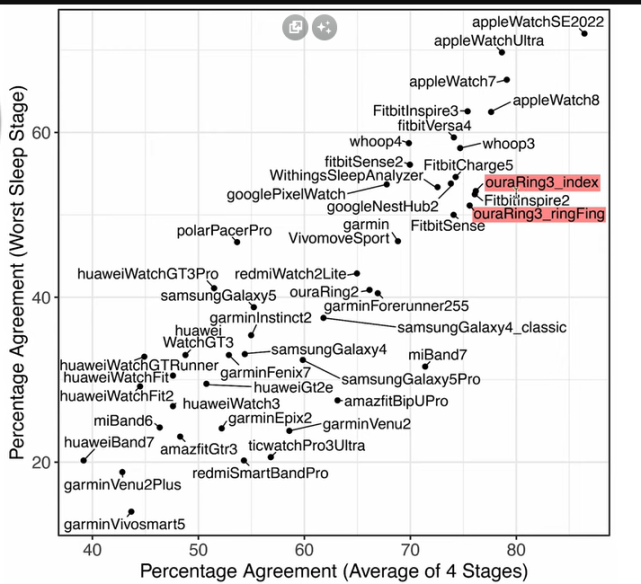
It’s good to register that Oura is making some progress, I would say, that they have to. It is currently the only smart ring with a subscription model, other competitors, although they had a slower start, are not slacking off, and also, the arrival of a possible (r)evolutionary ring is imminent, at least in terms of size. More on that some other time.
OURA 3 –40-50 EUR DISCOUNT — https://fitnesator.link/oura
CIRCULAR RING 8% DISCOUNT — https://fitnesator.link/circular
RINGCONN — https://fitnesator.link/ringconn
ULTRAHUMAN — https://fitnesator.link/ultrahuman
